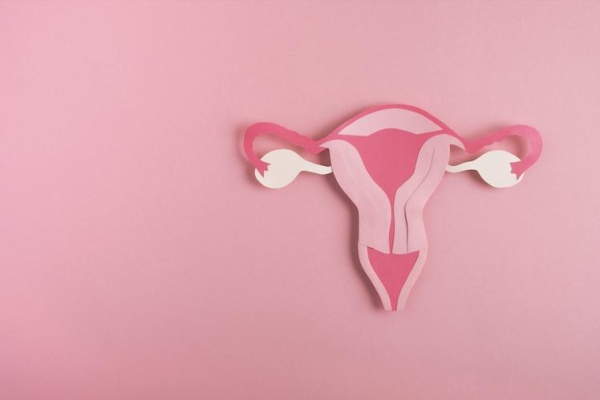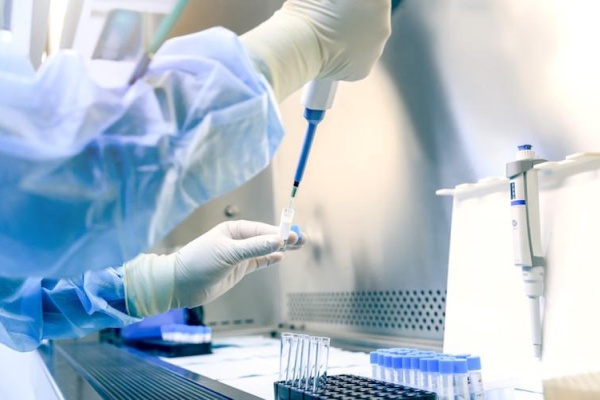Ectopic pregnancy: definition
An ectopic pregnancy is when the embryo implants and develops outside the uterine cavity. However, the uterus is the only organ in the human body that can support and adapt to the pregnancy process. So when the zygote nestles outside the endometrium, it cannot develop normally. 100% of ectopic pregnancies, therefore, end in abortion.
Ectopic pregnancies account for 2% of all pregnancies!
What causes ectopic pregnancies?
No. 1 cause of ectopic pregnancies
Tubal pregnancies. These occur as a result of an anomaly in the transport of the embryo to the uterus. In the case of a tubal pregnancy, where the blastocyst implants in the Fallopian tube, it is the size of the embryo that is at fault. The embryo is too large and has not been able to pass through the fallopian tube. The condition of the fallopian tube itself can also prevent the embryo from being transported to the uterine cavity. Congenital anomalies, inflammation, endometriosis, lesions, sexually transmitted diseases, and tubal contraction defects may be responsible for these tubal ectopic pregnancies.
No. 2 cause of ectopic pregnancies
Non-tubal pregnancies. In the case of a non-tubal ectopic pregnancy, the cause is generally an ovulation anomaly. The oocyte is not captured by the pinnae of the Fallopian tube. Fertilisation and implantation, therefore, take place outside the tubes and outside the uterus: in the ovary or in the abdominal cavity.
No. 3 cause of ectopic pregnancies
Cervical pregnancies. The causes of these pregnancies are poorly understood. It is thought that the endometrium is unable to accommodate an embryo and/or that the embryo is transported too quickly into the uterine cavity. History of caesarean section or curettage, uterine malformations, endometrial atrophy, and endometrial infections are risk factors for these pathological pregnancies.
No. 4 cause of ectopic pregnancies
Intramural pregnancies. These intrauterine pregnancies with pathological implantation are associated with the presence of scars in the myometrium which communicate with the cavity of the uterus. These scars are due to previous caesarean sections or curettages. Similarly, adenomyosis (a form of endometriosis affecting the myometrium) increases the risk of developing an intramural pregnancy.
Does fertility treatment encourage ectopic pregnancies?
Over the last few decades, there has been an increase in the number of ectopic pregnancies, which could be associated with the rise in the use of fertility journeys. The various fertility techniques are thought to be responsible for 5% of ectopic pregnancies. However, women undergoing assisted fertility reproductive technology care have many predispositions to this pathology (tubal infections or malformations, endometriosis, uterine malformations, endometrial atrophy, etc.). It is therefore difficult to establish clearly whether the link between fertility assistance and ectopic pregnancies is linked to the techniques operated or to the characteristics of the patients.
Symptoms of an ectopic pregnancy
The initial symptoms of an ectopic pregnancy are no different from those of normal pregnancy: no menstrual period, mild abdominal pain, tiredness, and nausea. As the pregnancy progresses, a number of signs may indicate an ectopic pregnancy: abnormal vaginal bleeding (brownish or blackish), severe abdominal pain, weakness, dizziness, malaise, low blood pressure, swollen belly, etc. These generally appear from the 5th week of pregnancy.
Diagnosis of an ectopic pregnancy
Monitoring blood levels of the pregnancy hormone βhCG can reveal the risk of an ectopic pregnancy. While levels of this hormone double every 48 hours in a normal pregnancy, they tend to stagnate in an ectopic pregnancy.
Transvaginal ultrasound is used to detect signs of ectopic pregnancy, such as an empty uterine cavity (absence of gestational sac) despite a positive pregnancy test.
What are the risks of an ectopic pregnancy?
In the majority of cases of ectopic pregnancy, the embryo stops developing spontaneously. The result is a spontaneous abortion: this is known as a miscarriage. In some cases, however, the pregnancy continues. This can be life-threatening for the mother.
If the embryo continues to develop, the risk of rupture of the organ carrying the embryo (tube, ovary, cervix, etc.) increases. These ruptures cause internal haemorrhage, which must be cared for as soon as possible by the medical team. These haemorrhagic ruptures occur when there is a delay in diagnosis.
If left untreated, these haemorrhages can be life-threatening for the mother.
What treatments are available for an ectopic pregnancy?
As described above, the majority of ectopic pregnancies end spontaneously, in the form of a miscarriage. If this is not the case, voluntary termination of pregnancy (IVG) is necessary.
When the diagnosis is made at a very early stage, it will be a medical abortion operating with pharmacological agents such as methotrexate, a folic acid inhibitor. Methotrexate blocks the replication of placental cells, resulting in the termination of the pregnancy. This is confirmed by a blood test showing a fall in βhCG levels.
If the βhCG levels remain unchanged, or if the diagnosis is made later, the abortion will be performed surgically. In this case, laparoscopy is performed. This technique involves cutting a few centimetres into the patient's abdomen to remove the embryo.
In the most serious cases, particularly in the case of haemorrhagic rupture, a laparotomy is performed. The abdomen is incised and the entire damaged organ can be removed: the tube in the case of a tubal pregnancy, for example. In the case of a ruptured intramural or cervical ectopic pregnancy, a complete hysterectomy may be required (removal of the uterus).
Early treatment enables the organ to be preserved and fertility to be maintained.
What happens after an ectopic pregnancy?
In the most extreme cases, where care for the ectopic pregnancy has required complete removal of the uterus (hysterectomy) or removal of both fallopian tubes (salpingectomy), the patient will never be able to become pregnant spontaneously.
In other cases, it is perfectly possible to become pregnant. Ectopic pregnancies do not affect the patient's fertility in any way. However, it should be noted that women with a history of ectopic pregnancy have a greater chance of recurrence. Future pregnancies will therefore be particularly closely monitored.
What you need to know about ectopic pregnancy
Ectopic pregnancy is when the embryo implants outside the endometrium. The consequences can be dramatic for the mother, which is why early diagnosis (from the 5th week of pregnancy) is vital. This enables the patient to be cared for rapidly so that the integrity of her entire reproductive system can be preserved and fertility preserved.
Written by:
Fabien Duval, Ph.D. Reproductive and developmental biology



